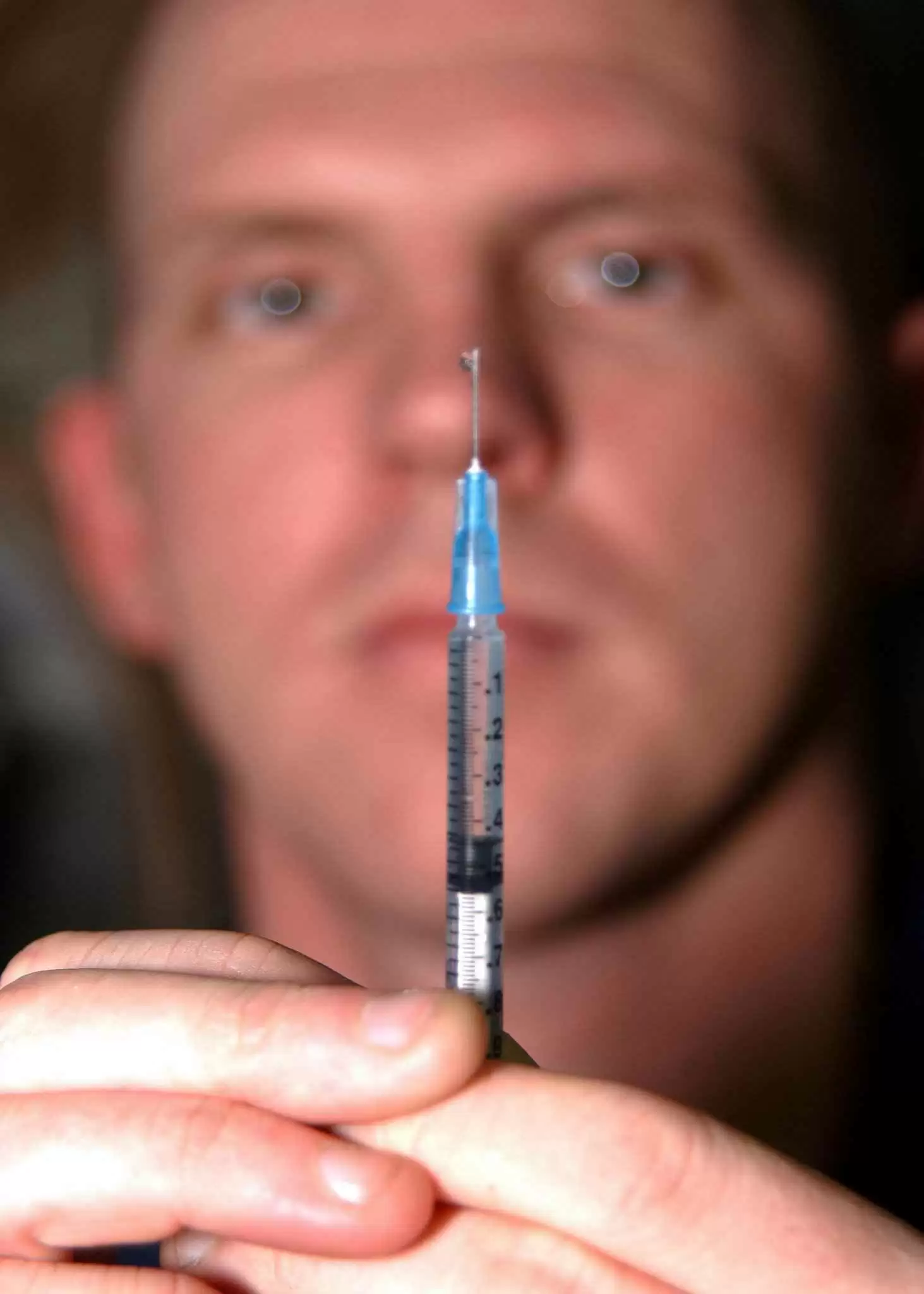
Celiac.com 05/29/2017 - Currently, a gluten-free diet is the only way to manage celiac disease. Can a celiac vaccine change that? One company thinks so. ImmusanT corporation has developed a therapeutic vaccine, Nexvax2, that is specifically designed to treat celiac disease. The vaccine is an adjuvant-free mix of three peptides that include immunodominant epitopes for gluten-specific CD4-positive T cells. The vaccine is designed to neutralize gluten-specific CD4-positive T cells to further antigenic stimulation.
As part of their efforts to evaluate the vaccine, a team of researchers recently set out to investigate the efficacy of epitope-specific immunotherapy targeting CD4-positive T cells in celiac disease. Specifically, they assessed the safety and pharmacodynamics of the Nexvax2 vaccine in patients with celiac disease on a gluten-free diet.
Celiac.com Sponsor (A12):
An article detailing the findings of their most recent effort, titled Epitope-specific immunotherapy targeting CD4-positive T cells in celiac disease: two randomized, double-blind, placebo-controlled phase 1 studies, appeared in the Lancet.
The research team included Gautam Goel, PhD, Tim King, MBBChir, A James Daveson, MBBS, Jane M Andrews, MBBS, Janakan Krishnarajah, MBBS, Richard Krause, MD, Gregor J E Brown, MBBS, Ronald Fogel, MDCM, Charles F Barish, MD, Roger Epstein, MD, Timothy P Kinney, MD, Philip B Miner Jr, MD, Jason A Tye-Din, MBBS, Adam Girardin, BS, Juha Taavela, MD, Alina Popp, MD, John Sidney, BS, Prof Markku Mäki, MD, Kaela E Goldstein, BS, Patrick H Griffin, MD, Suyue Wang, PhD, John L Dzuris, PhD, Leslie J Williams, MBA, Prof Alessandro Sette, DrBiolSc, Prof Ramnik J Xavier, MD, Prof Ludvig M Sollid, MD, Prof Bana Jabri, MD, and Dr Robert P Anderson, MBChB.
To assess the safety and pharmacodynamics of the vaccine in patients with celiac disease on a gluten-free diet, ImmusanT recently conducted two randomized, double-blind, placebo-controlled, phase 1 studies at 12 community sites in Australia, New Zealand, and the USA, in HLA-DQ2·5-positive patients aged 18–70 years who had celiac disease and were following a gluten-free diet.
The goal of the study was to document the number and percentage of adverse events in the treatment period in an intention-to-treat analysis.
The study enrolled a total of 108 participants from Nov 28, 2012, to Aug 14, 2014, in the three-dose study, and from Aug 3, 2012, to Sept 10, 2013, in the 16-dose study.
Overall, 62 (57%) of 108 participants were randomly assigned after oral gluten challenge and 20 (71%) of 28 participants were randomly assigned after endoscopy.
None of the study participants, investigators, or staff knew which patients received a given treatment; these details were known only by the study’s lead pharmacist.
In the three-dose study, participants received either Nexvax2 60 μg, 90 μg, or 150 μg weekly, or placebo over 15 days; in a fourth biopsy cohort, patients received either Nexvax2 at the maximum tolerated dose (MTD) or a placebo.
In the 16-dose study, participants received Nexvax2 150 μg or 300 μg or placebo twice weekly over 53 days; in a third biopsy cohort, patients also received either Nexvax2 at the MTD or a placebo. In both studies, about 5% of the participants reported were vomiting, nausea, and headache.
Among participants given the MTD, four of eight subjects in the third cohort experienced adverse gastrointestinal treatment-emergent events; zero of three participants had adverse events in the biopsy cohort in the three-dose study, while five events occurred in five (63%) of eight participants in the first cohort, and three events in two (29%) of seven participants in the biopsy cohort of the 16-dose study.
Those who received the vaccine at the MTD on either schedule showed no significant difference between average villous height to crypt depth ratio in distal duodenal biopsies, as compared with those who received placebo.
In the 4-week post-treatment period, ascending dose cohorts underwent a further double-blind crossover, placebo-controlled oral gluten challenge, which had a fixed sequence. Meanwhile, biopsy cohorts received a gastroscopy with duodenal biopsies and quantitative histology within 2 weeks without oral gluten challenge. Of the participants who completed the post-treatment oral gluten challenge per protocol, interferon γ release assay to Nexvax2 peptides was negative in two (22%) of nine placebo-treated participants in the three-dose study.
Compared with two (33%) of six who received Nexvax2 60 μg, five (63%) of eight who received Nexvax2 90 μg, and six (100%) of six who received Nexvax2 150 μg (p=0·007); in the 16-dose study, none (0%) of five placebo-treated participants had a negative assay versus six (75%) of eight who received Nexvax2 150 μg (p=0·021).
The MTD of Nexvax2 was 150 μg for twice weekly intradermal administration over 8 weeks, which modified immune responsiveness to Nexvax2 peptides with no adverse impact on duodenal histology.
Patients who received the intradermal administration of the vaccine reported gastrointestinal symptoms were not subtantially different to those seen with oral gluten challenge.
While the commercial release of a viable vaccine is likely still some time away, early-phase trials have shown promise. Based on these results, ImmusanT will continue clinical development of this potentially therapeutic vaccine for celiac disease.
Both trials were completed and closed before data analysis. Trials were registered with the Australian New Zealand Clinical Trials Registry, numbers ACTRN12612000355875 and ACTRN12613001331729.
Source:
Affiliations:
The researchers are variously affiliated with the Division of Gastroenterology and Center for Computational and Integrative Biology, Massachusetts General Hospital, Boston, MA, USA, the Broad Institute of Harvard and Massachusetts Institute of Technology, Cambridge, MA, USA; the Department of Gastroenterology, Auckland City Hospital, Auckland, New Zealand; the School of Medicine, University of Queensland, Brisbane, QLD, Australia; the Department of Gastroenterology & Hepatology, Royal Adelaide Hospital, Adelaide, SA, Australia; the Linear Clinical Research, Nedlands, WA, Australia; the Department of Gastroenterology, Alfred Hospital, Prahran, VIC, Australia; the Clinical Research Institute of Michigan, Chesterfield, MI, USA; the University of North Carolina School of Medicine, Chapel Hill, NC, USA; Wake Gastroenterology and Wake Research Associates, Raleigh, NC, USA; Atlantic Digestive Specialists, Portsmouth, NH, USA; Ridgeview Medical Center, Waconia, MN, USA; Oklahoma Foundation for Digestive Research, Oklahoma City, OK, USA; ClinSearch, Chattanooga, TN, USA; the Immunology Division, Walter and Eliza Hall Institute of Medical Research, Department of Medical Biology, University of Melbourne, Parkville, VIC, Australia; the Murdoch Children's Research Institute and Department of Gastroenterology, Royal Melbourne Hospital, Parkville, VIC, Australia; the Immunology Division, Walter and Eliza Hall Institute of Medical Research, Department of Medical Biology, University of Melbourne, Parkville, VIC, Australia; the Tampere Center for Child Health Research and Department of Pediatrics, University of Tampere Faculty of Medicine and Life Sciences and Tampere University Hospital, Tampere, Finland; the Tampere Center for Child Health Research and Department of Pediatrics, University of Tampere Faculty of Medicine and Life Sciences and Tampere University Hospital, Tampere, Finland; the Alfred Rusescu Institute for Mother and Child Care and Carol Davila University of Medicine and Pharmacy, Bucharest, Romania; Division of Vaccine Discovery, La Jolla Institute for Allergy and Immunology, La Jolla, CA, USA; the Tampere Center for Child Health Research and Department of Pediatrics, University of Tampere Faculty of Medicine and Life Sciences and Tampere University Hospital, Tampere, Finland; the Centre for Immune Regulation, KG Jebsen celiac Disease Research Centre, and Department of Immunology, University of Oslo, Oslo, Norway; the Oslo University Hospital-Rikshospitalet, Oslo, Norway; Department of Pediatrics, Department of Medicine, University of Chicago, Chicago, IL, USA; and ImmusanT in Cambridge, MA, USA.





Recommended Comments
Create an account or sign in to comment
You need to be a member in order to leave a comment
Create an account
Sign up for a new account in our community. It's easy!
Register a new accountSign in
Already have an account? Sign in here.
Sign In Now